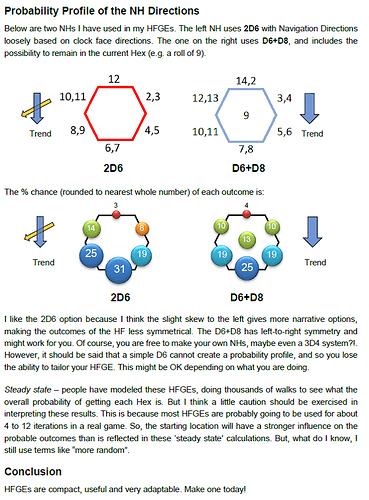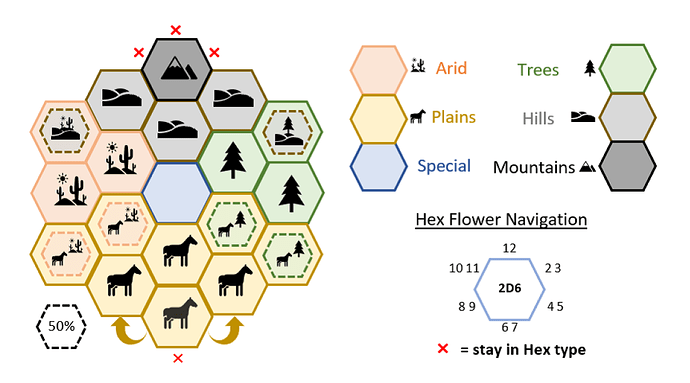I thought I’d start a thread to talk about Hex Flower Game Engines.
I made a guide (Hex Flower Cookbook) about these that can be found here:
Basically, if you have not seen these Hex Flowers before, they are like a random table, but with a ‘memory’.
That is, the last result has an affect on the next result.
I’ve made quite a few of these, and other have too. To get a flavor please see my blog:
I’m very interested in hearing your ideas, thoughts and feedback!!
:O)

 .
.
